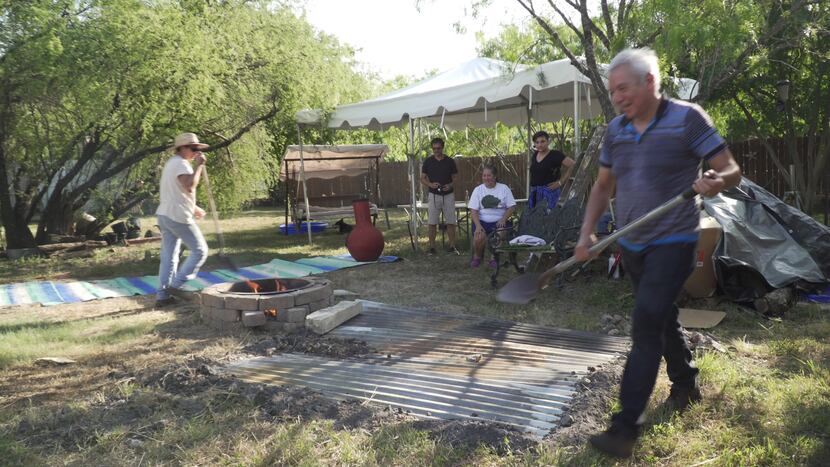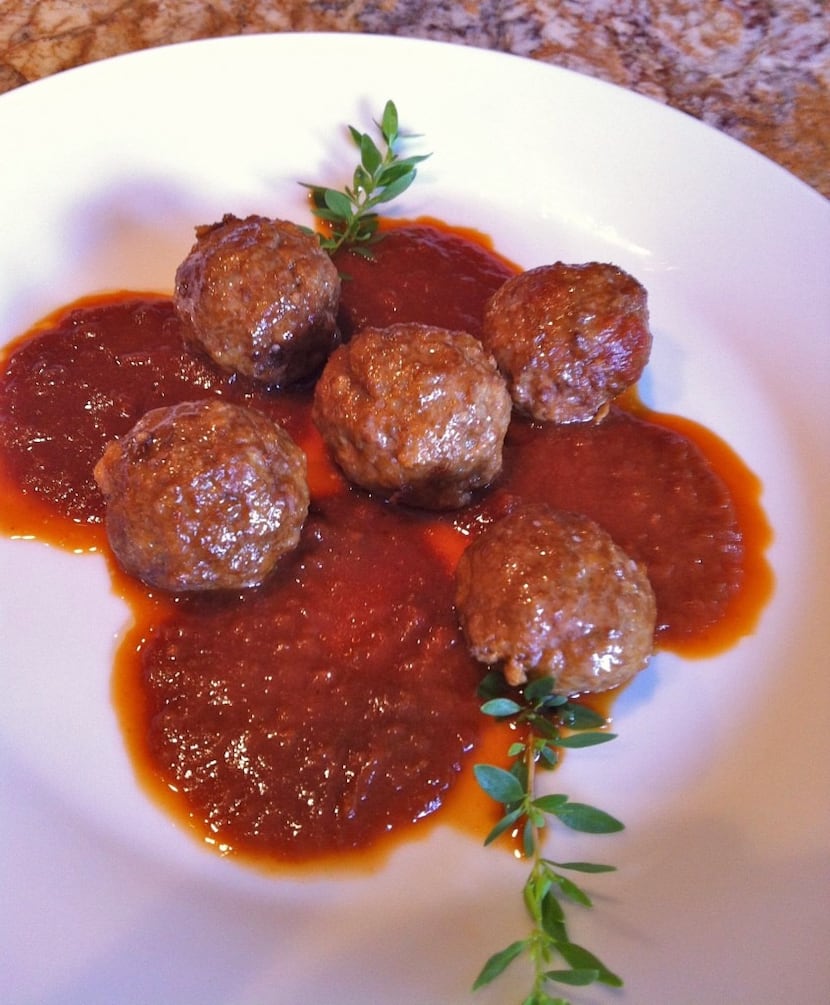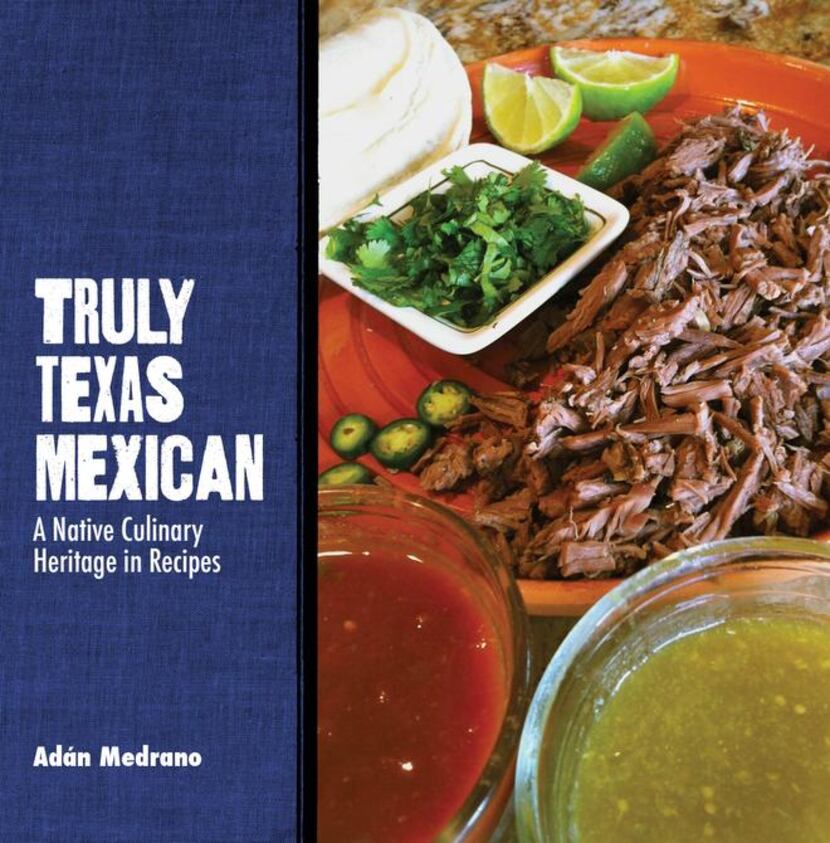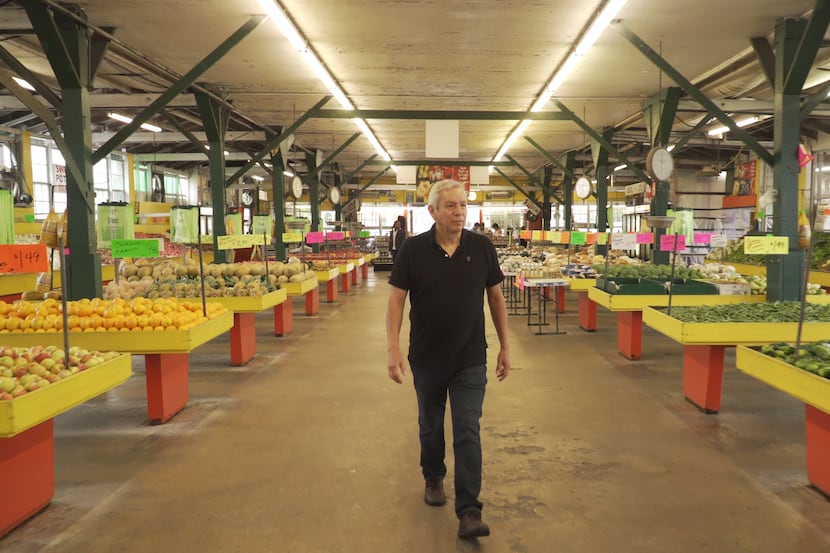In his upcoming documentary Truly Texas Mexican, Adán Medrano traces the food heritage of the Texas-Mexico borderlands, a legacy that lives on today in the comida casera (home cooking) of Texas Mexican kitchens across southern Texas.
Truly Texas Mexican tempts our senses with tomato salsa made in a molcajete, an ancient Mesoamerican mortar and pestle; simmering, brick-red adobo sauce for ancho chile meatballs; and barbacoa de pozo, a traditional, earthen-pit-cooked cow’s head.
The borderlands, Medrano explains, were peopled by Indigenous hunter-gatherers long before there was a Texas-Mexico border. In fact, long before there was a Texas. Or a Mexico. Even a Spain. And earthen-pit cooking? Evidence traces its use back at least 15,000 years in the San Antonio area.
But none of this rich history was part of Medrano’s studies in 2010 at the Culinary Institute of America Texas campus in San Antonio. He was troubled at the time by the absence of any mention of Indigenous Texas Mexican cuisine.
“There was no presence of my food,” he says, of the comida casera he grew up with in his mother’s San Antonio kitchen. “I knew our story had not been told, but I did not realize it was so invisible.”

The documentary is part of his mission to change that. Already it’s been picked up by several Texas PBS stations, where it will air later this year or early next. The film will also be available through Vimeo on demand, as well as other outlets. For the latest on viewing information, go to the website at trulytexasmexican.com.
Texas Mexican food isn’t Tex-Mex, Medrano emphasizes, the widely popular Texas cuisine created a century ago by and for Anglos. Nor is it the formal cuisine of Mexico that instructors presented at the Culinary Institute. And it has changed through the years and centuries as new cultures, notably Europeans, brought their own influences ― all absorbed in the Texas Mexican cookpot.
In Truly Texas Mexican, we journey with the Houston writer and chef to various locales, primarily women’s kitchens from the Rio Grande Valley north to San Antonio. Why women’s kitchens? Because women have been the carriers of the traditional ways.
“Women have a key role that’s been left out of history,” Medrano says. The film was inspired by his book Truly Texas Mexican, A Native Culinary Heritage in Recipes (2014), part of the Texas Tech Press Grover E. Murray Studies in the American Southwest series.

We visit San Antonio chef and caterer Rosalía Vargas making adobo the same way her mother and grandmother made the redolent, chile-infused sauce. Medrano takes us to his niece Christine Ortega’s San Antonio home for a traditional cabeza de pozo, a cow’s head seasoned, then wrapped and placed overnight to cook in an earthen-pit oven. The modern-day delicacy, says Joseph Doria, general manager of Bolner’s Meat Co. in San Antonio, was “survival food for us.”
“They [our forebears] were sustained on the same foods 1,000 years ago ― nopalitos, onions, fruits, pecans, tomatoes, squash, beans,” Medrano says. All are Native American foods, along with familiar, ubiquitous corn.
And few of us may realize that a natural salt lake exists north of Harlingen near Raymondville that was essential to early cultures. La Sal del Rey was a destination for Indigenous peoples from as far away as central Mexico, according to historian Homero Vera.
“Indians trekked here for salt,” Vera explains in the film. “The Indigenous people lost an engine of stability,” he says, “when the Spanish arrived.” The invaders claimed the mineral rights for the king of Spain and slapped a tariff on the precious mineral.

The film brings up some uncomfortable questions: Who are the natives, who “owns” the land, and who are the immigrants? At one point, it challenges the Texas Historical Commission to rewrite its racist narrative of the Karankawa Indians on its plaque in Corpus Christi. But the story is complicated: It was the Spanish who brought cattle to the region for that traditional barbacoa and the cow’s milk for the custard-like jericalla.
The documentary, as much a valentine as a deep dive into the borderlands’ foodways and history, was borne of an online exchange between Medrano and Uruguayan film director Aníbal Capoano, who felt strongly that the story was a universal one.
“I started talking with the director online,” Medrano says, “and he said, ‘Do a film about your book, about Indigenous food and the power it had.’” And so he did, ultimately working with Capoano to bring the project to fruition.
Kim Pierce is a Dallas freelance writer.

Ancho Chile Meatballs
4 ancho chiles
1 white onion
3 garlic cloves
2 teaspoons fresh Mexican oregano
3 teaspoons salt (divided use)
1 cup water
1 tablespoon canola oil
1/2 cup milk
3 ounces bread slices, crusts removed, broken up into 1-inch pieces (about 1 1/2 cups)
1 pound ground pork
1 pound 96% lean ground beef
1 egg, beaten
2 cups diced tomatoes
2 cups chicken stock
1/4 teaspoon sugar
1/2 tablespoon white vinegar
Preheat oven to 400 F.
Remove the seeds from the chiles by cutting a slit lengthwise in each chile to open it and remove the stem with the attached seeds. Remove all other seeds in the pod.
Place the chiles in a large pot with water to cover. Bring to a boil, turn off heat, and let chiles steep for 15 minutes to rehydrate. Drain and allow to cool. Discard the water.
Place the chiles, onion, garlic, oregano and 1 teaspoon salt in a blender with 1 cup water and blend on high until the paste is completely smooth, with no large particles. Add a little more water if needed. If large particles remain, strain the paste through a fine-mesh sieve.
Heat the canola oil in a Dutch oven and add the chile puree – with caution, because it may splatter as the liquid meets the oil. Fry for 10 minutes. The color will deepen and the puree will thicken. Set aside.
In a bowl, pour the milk, add the bread and set aside.
In large bowl, mix together the pork and beef. Add the beaten egg and 2 remaining teaspoons salt. Squeeze excess milk from the bread and mix the bread into the meat using your hands or a large spatula or spoon. Add 8 tablespoons or ½ cup of the ancho chile puree to the meat and mix thoroughly. Set puree aside.
Form the meat into 40 (1 ½-inch) balls and place them on a large baking sheet. Roast in the oven for 12 to 15 minutes, until browned and crispy on the outside. Remove from oven and allow to rest for 10 minutes before serving.
To the remaining chile puree in the Dutch oven, add the tomatoes, chicken stock, sugar and vinegar and bring to a boil. Cook for 30 minutes until the adobo begins to thicken. Taste and correct the salt.
Serve the meatballs on a plate with the adobo sauce. Makes 6 to 8 servings.
Source: Truly Texas Mexican: A Native Culinary Heritage in Recipes

Braised Beef for Barbacoa Tacos
This is Adán Medrano’s adaptation of the barbacoa de pozo ― the traditional earthen-pit-roasted cow’s head ― for the modern kitchen, made with beef chuck.
2 pounds boneless beef chuck
3 garlic cloves, peeled and crushed
1/2 white onion
1/2 teaspoon crushed black peppercorns
1/2 teaspoon salt
2 (2-inch) sprigs fresh Texas Mexican oregano
Hot corn tortillas, a variety of salsas, fresh coarsely chopped cilantro and Mexican lime wedges
Preheat oven to 200 F.
Place the beef in a Dutch oven and fill halfway with water. Add the garlic, onion, black peppercorns, salt and oregano, and bring to a boil. Turn off the heat.
Cover tightly and transfer to oven and cook for 6 to 8 hours. Turn the meat over once during cooking.
When beef is done, place it on a cutting board or in a large bowl and, using forks or wooden spoons, pull the meat apart. Adjust the salt. Keep the meat warm for making tacos.
To make tacos, serve with hot corn tortillas, a variety of salsas, fresh coarsely chopped cilantro and Mexican lime wedges. Makes 8 servings.
Source: Truly Texas Mexican: A Native Culinary Heritage in Recipes
Squash and Corn Stew
2 tatuma (Mexican heirloom) or zucchini squash
1 tablespoon canola oil
1/2 white onion, cut into thin vertical slices
1 ear corn, kernels cut off close to the cob
2 Roma tomatoes, diced into small cubes
1/4 cup water
1/2 teaspoon salt, or to taste
Cut off and discard both tips of the squash. Slice the squash lengthwise into quarters, then slice the quarters into ½-inch wedges. Set aside.
Heat the oil in a 12-inch skillet over medium heat. Add the onion and cook 3 to 5 minutes, until it starts to become translucent.
Add the corn and tomatoes and cook another 2 minutes, stirring.
Add the squash, water and salt to the skillet. Cover and cook for 5 to 7 minutes, or until the squash has released its juices (soft but not mushy). Taste and adjust salt.
Makes 4 servings.
Source: Don’t Count the Tortillas: The Art of Texas Mexican Cooking by Adán Medrano (2019)
Paloma Grapefruit Cocktail
1 fresh Mexican lime
Salt, to coat rim of glass
2 ounces tequila
4 ounces (or 1/2 cup) fresh grapefruit juice
1/2 teaspoon sugar
2 ounces (or 1/4 cup) sparkling water
Rim a tall glass with lime juice and coat with salt. Set aside.
In a shaker, add tequila, grapefruit juice, sugar and a squeeze of lime juice. Stir or shake until sugar is dissolved.
Fill the salt-rimmed glass with ice, and pour the tequila-grapefruit juice and sparkling water over the ice and serve.
Makes 1 serving.
Source: Don’t Count the Tortillas: The Art of Texas Mexican Cooking by Adán Medrano (2019)
